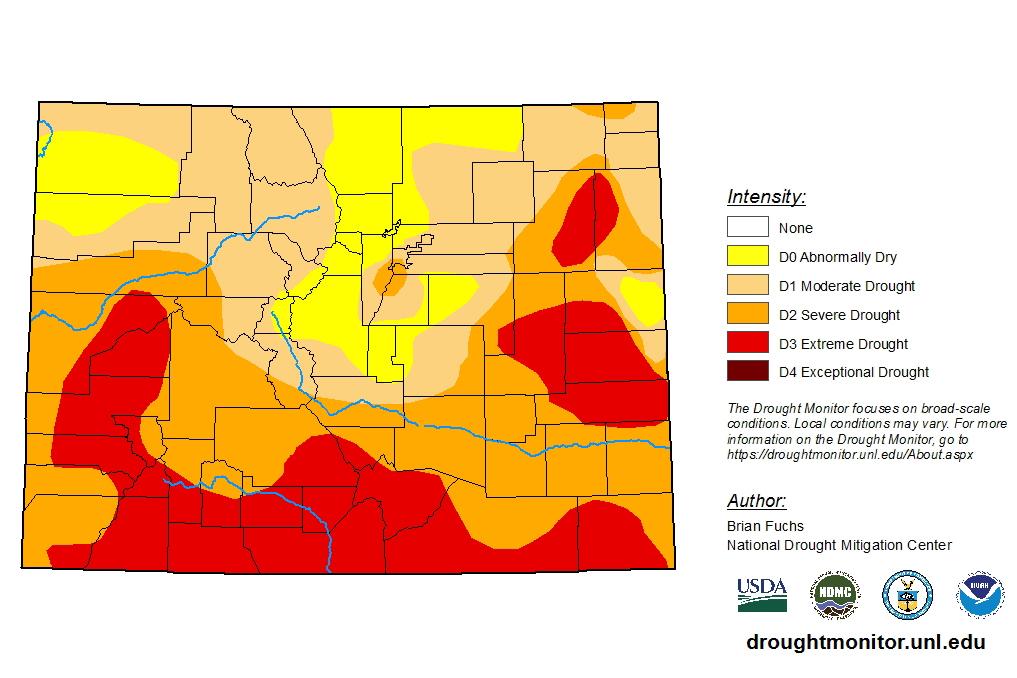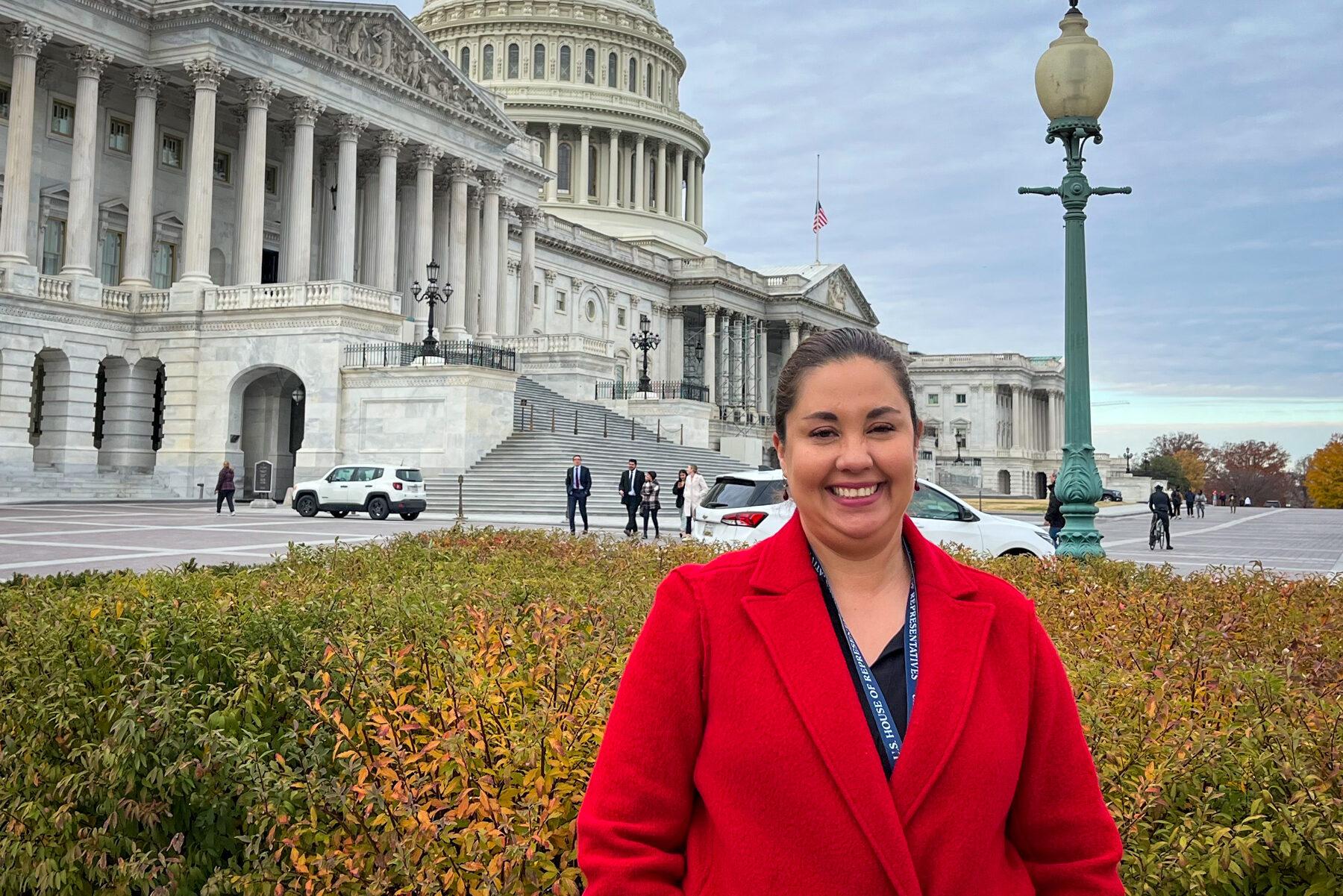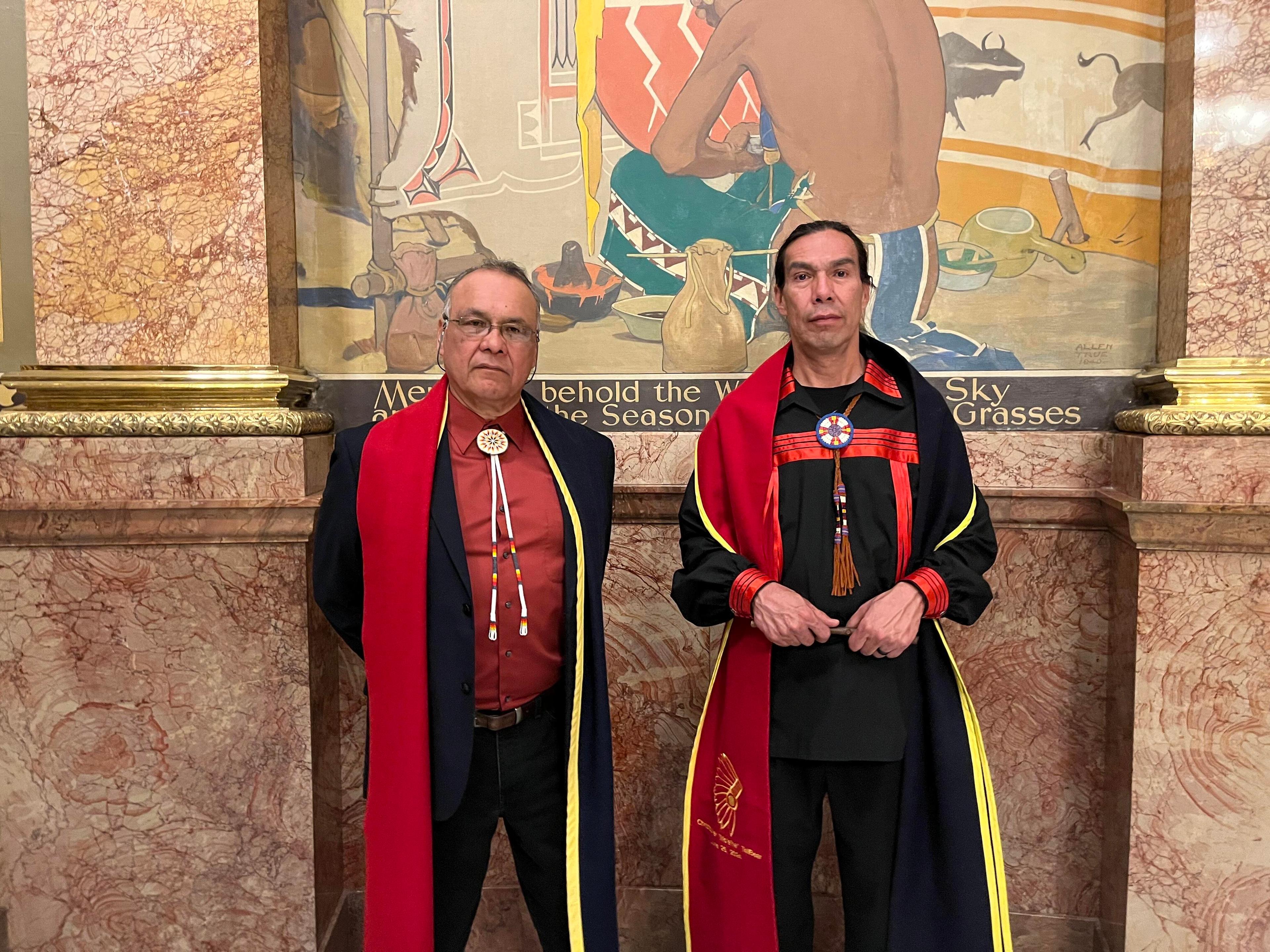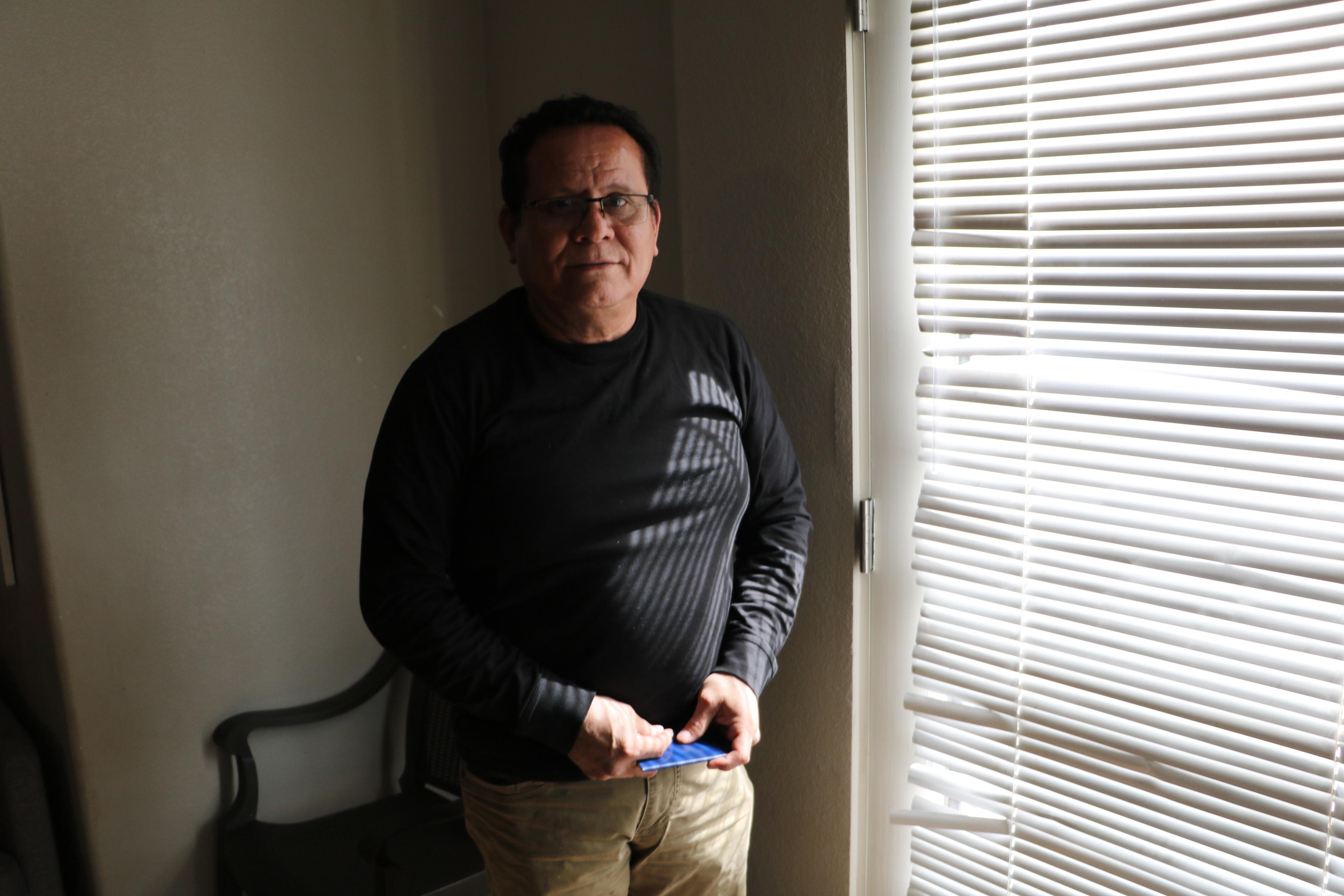
Two weeks ago, nearly all of Colorado was in a drought. This week, it's even worse. Just over 85 percent of the state is experiencing moderate to extreme drought, and the remaining 15 percent is abnormally dry, often a precursor to drought.
Experts rate drought on an intensity scale from D0, abnormally dry, and considered a precursor or aftereffect of drought, to D4, exceptional drought, which means an area is experiencing exceptional and widespread crop and pasture losses, fire risk, and water shortages that result in water emergencies. Currently, Colorado does not have any areas experiencing D4 level drought.
But, according to the most recent map from the U.S. Drought Monitor, 26 percent of Colorado — mostly in the southern half of the state — is in an extreme drought, level D3, which is when large fires develop, insect infestations occur and water restrictions have to be implemented.
Colorado had its eighth driest stretch from January to July of this year with only 8 inches of precipitation, that's 3.17 inches below average, according to the National Centers for Environmental Information.
"If we continue to stay really dry like this, obviously the threat for wildfires would increase as we get in the fall where we start getting more wind and especially if it continues in a dry pattern," said Scott Entrekin, a meteorologist with the National Weather Service in Boulder.
At this time last year, the entire state was drought-free. Then a monsoon season failed to materialize, leaving Colorado dry and susceptible to drought conditions.
Colorado isn't alone in experiencing a dry first half of 2020, much of the West and parts of the Deep South, central Plains and the Southeast recorded below-average precipitation. Arizona ranked sixth driest while Nevada ranked 11th driest.
Throughout most of the country above average temperatures were recorded. Florida, for example, had its warmest year-to-date period on record. New Jersey ranked a second warmest period along with Virginia, Maryland, Delaware, Connecticut, and others.









